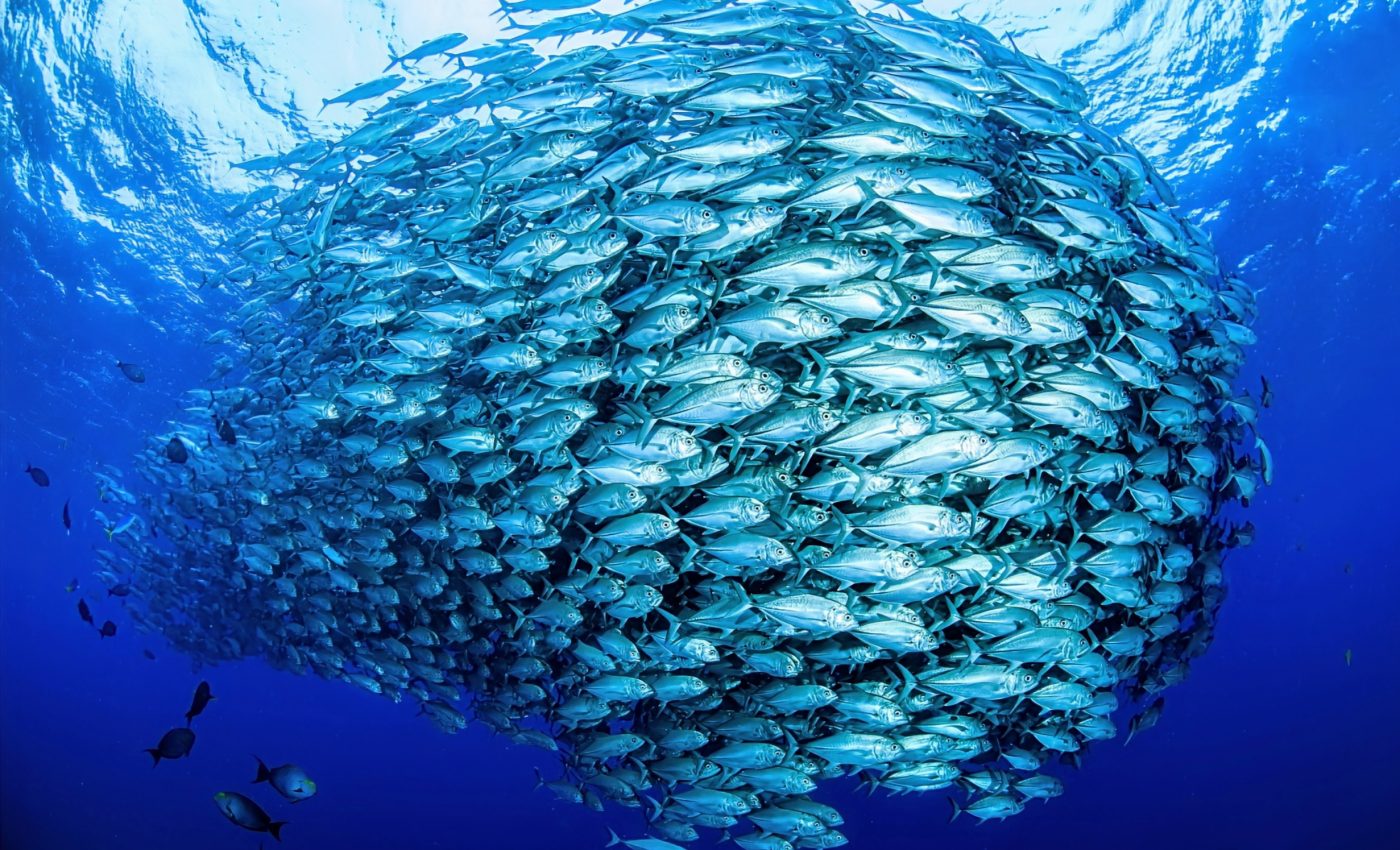
Largest predation event ever witnessed involved millions of fish
There’s a common saying that there is strength in numbers. We usually associate this with the idea of unity and group power. Yet, scientists are discovering that in the aquatic realm, this is not necessarily the case. Fish that swarm together don’t seem to have the advantage of safety in numbers.
The research shows that large groups of fish often make a bigger, more attractive target for predators.
Fish swarms in the Arctic
This discovery was made by MIT and Norwegian oceanographers during an exploration of a large patch of ocean off the coast of Norway.
The researchers conducted the study during the height of the capelin’s spawning season. Capelin are tiny Arctic fish, about the size of an anchovy, that migrate southward each February from the Arctic ice sheet edges to the Norwegian coast to lay their eggs.
The same coastline also happens to be a pitstop for the Atlantic cod, the capelin’s main predator. The scientists watched as the cod followed the capelin south, feeding on the small fish as they spawned.
Massive fish predation event
Reporting these findings in the journal Nature Communications Biology, the MIT team captured interactions between migrating cod and spawning capelin over a vast area.
Using a sonic-based imaging technique, the researchers observed as random capelin began forming a massive shoal. Almost as if in response to this, individual cod also began grouping together, forming an enormous shoal of their own.
Before anyone had time to blink, the cod had descended upon the capelin. They consumed over 10 million of the gathered fish. This quick, dramatic encounter is the largest known predation event ever recorded, both in terms of the number of individuals involved and the area where it took place.
Despite the sheer size of this event and the numbers consumed, it had minimal impact on the capelin population as a whole. The devoured shoal represented only 0.1 percent of the capelin that spawn in the region.
Climate change: Stressor for survival
However, as climate change pushes the Arctic ice sheet to retreat, the capelin will have to swim longer distances to spawn. This not only puts more stress on the fish swarms but also makes them more vulnerable to natural predation events like the one the research team observed.
“In our work we are seeing that natural catastrophic predation events can change the local predator prey balance in a matter of hours,” said Nicholas Makris, professor of mechanical and ocean engineering at MIT.
“That’s not an issue for a healthy population with many spatially distributed population centers or ecological hotspots.”
“But as the number of these hotspots deceases due to climate and anthropogenic stresses, the kind of natural ‘catastrophic’ predation event we witnessed of a keystone species could lead to dramatic consequences for that species as well as the many species dependent on them.”
Makris’ co-authors on the paper are Shourav Pednekar and Ankita Jain at MIT, along with Olav Rune Godø of the Institute of Marine Research in Norway.
Monitoring the fish swarms
How did the team observe this interaction of life and death in the middle of the ocean? It all comes down to technology.
The experts deployed the Ocean Acoustic Waveguide Remote Sensing (OAWRS) system. This sonic imaging approach uses a vertical acoustic array attached to a boat’s bottom to send sound waves down into the ocean, which then scatter in all directions.
A second boat towing an array of acoustic receivers picks up the reflected waves. These can come from as far as tens of kilometers away.
The scientists can then analyze the collected waveforms to create instantaneous maps of the ocean over a vast area.
Resonance of swim bladders
In this particular study, the researchers employed a “multispectral” technique to differentiate between fish species. They based this distinction on the unique acoustic resonance of the fish’s swim bladders.
“Fish have swim bladders that resonate like bells,” noted Makris. “Cod have large swim bladders that have a low resonance, like a Big Ben bell, whereas capelin have tiny swim bladders that resonate like the highest notes on a piano.”
Future of predation studies
The researchers have paved the way for future studies on predation of fish swarms.
“It’s been shown time and again that, when a population is on the verge of collapse, you will have that one last shoal. And when that last big, dense group is gone, there’s a collapse,” said Makris. “So you’ve got to know what’s there before it’s gone, because the pressures are not in their favor.”
The research was supported, in part, by the U.S. Office of Naval Research and the Institute of Marine Research in Norway.
The study is published in the journal Communications Biology.
—–
Like what you read? Subscribe to our newsletter for engaging articles, exclusive content, and the latest updates.
Check us out on EarthSnap, a free app brought to you by Eric Ralls and Earth.com.
—–













